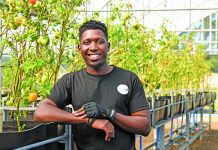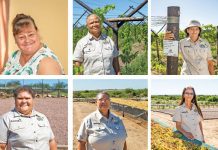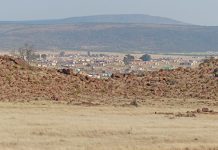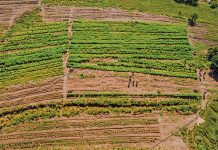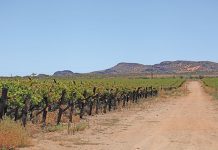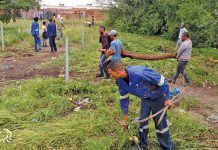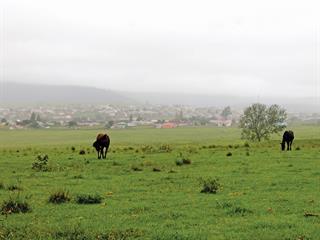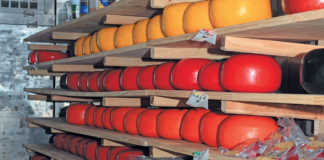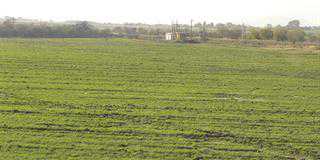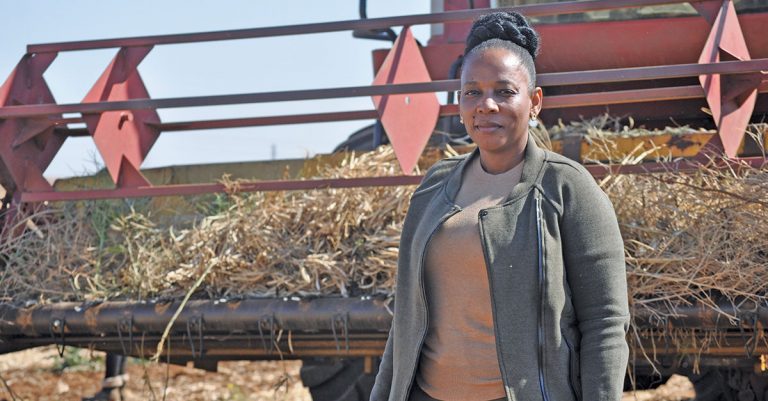
Photo: Pieter Dempsey
Lusanda Moletsane runs Khumo ea Tsebo (which means ‘wealth of knowledge’ in Sesotho), a black woman-owned consulting services company based in Gauteng.
She found her passion for agriculture a few years ago when she was approached to turn failing farms around. Then, two years ago, she began managing an aggregator farming project where farmers produce small white beans for the formal market.
At the beginning of 2020, she approached Tiger Brands and entered into an offtake agreement with the company, which now buys all the small white beans produced by the aggregator’s farmers for the manufacturing of its canned baked beans. Tiger Brands’ Enterprise and Supplier Development programme also provided the aggregator project with R10,5 million in funding.
As a result of this deal, Moletsane is now the company’s largest black, woman-owned aggregator of small white beans.
Fourteen farmers have since joined the programme, which spans about 465ha across farms near Nigel and Bronkhorstspruit, and they grew their first small white bean crop in 2020.
As the programme’s manager, Moletsane assists the farmers in reaching their maximum potential, and she aims to grow the production of small white beans to approximately 1 000ha within the next year. There are also plans for large-scale diversification into vegetable, maize and poultry farming on around 10 000ha, with about 40 farmers.
Moletsane says she knows of far too many farmers who live and work from hand to mouth, and she is motivated to help them build sustainable businesses and join the mainstream economy within the agriculture sector.
She admits that running the programme has been a trial by fire, as she had to learn quickly on the job and adapt to the methods and technologies used in the production of small white beans.
“While production is very important, the management side of the business is even more so. Training is another crucial tool for improving the farmers’ output.”
Small white bean production
Moletsane says that, from a management and financial perspective, it made sense to start with a niche crop such as small white beans rather than maize or other grains, as the former have a shorter growing season of four months.
As a result of this, harvesting is faster and income is earned much sooner. The planting season for small white beans is from mid-December to mid-January; however, depending on the area, it can be extended to mid-March.
The programme uses a single cultivar, PAN 123, which is the best-performing cultivar on the lands on which they are planting, according to Moletsane, and the yields are highly consistent.
Precision practices are also followed in everything from soil preparation to harvesting, and they started the season by conducting soil analyses to determine which nutrients it required. Once the soil had been tested, it was disced and ploughed, and nutrients added to ensure the correct pH.
NPK 1.2.2(18) fertiliser was applied in liquid form at a rate of 300kg/ha, while 1.2.2 (38) was applied in granular form at 200kg/ha, based on recommendations from the soil analyses. Urea (46%) top dressing was applied at 200kg/ha.
The soil is generally loamy, but differs across the fields. And, while small white beans prefer the loamy soil, Moletsane says they have had success with both the rocky and clay soils on the farms.
The average annual rainfall for Nigel and Bronkhorstspruit is 600mm and 500mm to 600m respectively.
Over the past season, the farmers have produced an average of around 1,8t/ha. Their break-even yield was calculated at between 1,3t/ha and 1,5t/ha.
While the farmers have not been affected by major pest outbreaks, they spray a combination of pesticides to control any pests that could affect their bean production.
In the coming season, the farmers will diversify their crops by rotating small white beans with maize and sorghum. This will ensure they get the most from the land, says Moletsane.
They are unable to plant winter crops, as they do not have irrigation systems in place.
The small white beans are planted at an inter-row width of either 75cm or 90cm
using six- and eight-row planters. Although the beans planted in the 75cm rows produce a greater yield, Moletsane says she prefers the 90cm rows, as they allow the beans more space for growth.
In addition, if the rows are too narrow, the plant canopy hinders the tractors’ movements between the rows, which causes damage to the crops.
To achieve optimal growth, the farmers plant the beans at depths of between 2,5cm and 5cm, and at a density of 177 000 plants/ha.
Job creation and challenges
The criteria for joining the aggregator are quite specific, and only those farmers who have certain farming methods already in place are considered. For example, they should have a farming background and experience in crop production, as well a farming structure that is operating efficiently.
Moletsane says that one of her biggest challenges is ensuring the farmers comply with the production standards of the programme. She has therefore tasked agronomists with overseeing both sites.
The 14 farmers employ over 15 full-time workers and seasonal workers are hired as needed.
According to Moletsane, the opportunity for more job creation will continue to grow as the aggregator expands.
Vision for the future
Moletsane herself plants beans on around 120ha of the 465ha as part of the programme, and wants to increase her hectarage, depending on the availability of land.
She says that passion is the key to success, but that farming and managing the aggregator have not been easy.
“You must be ready and willing to invest in the business, and not just expect to receive funding.”
She adds that the best decision she made for her career was to start the aggregator and get involved in farming.
“If I had given up when times were tough, I would never have realised my dream.”
Email Lusanda Moletsane at [email protected].

